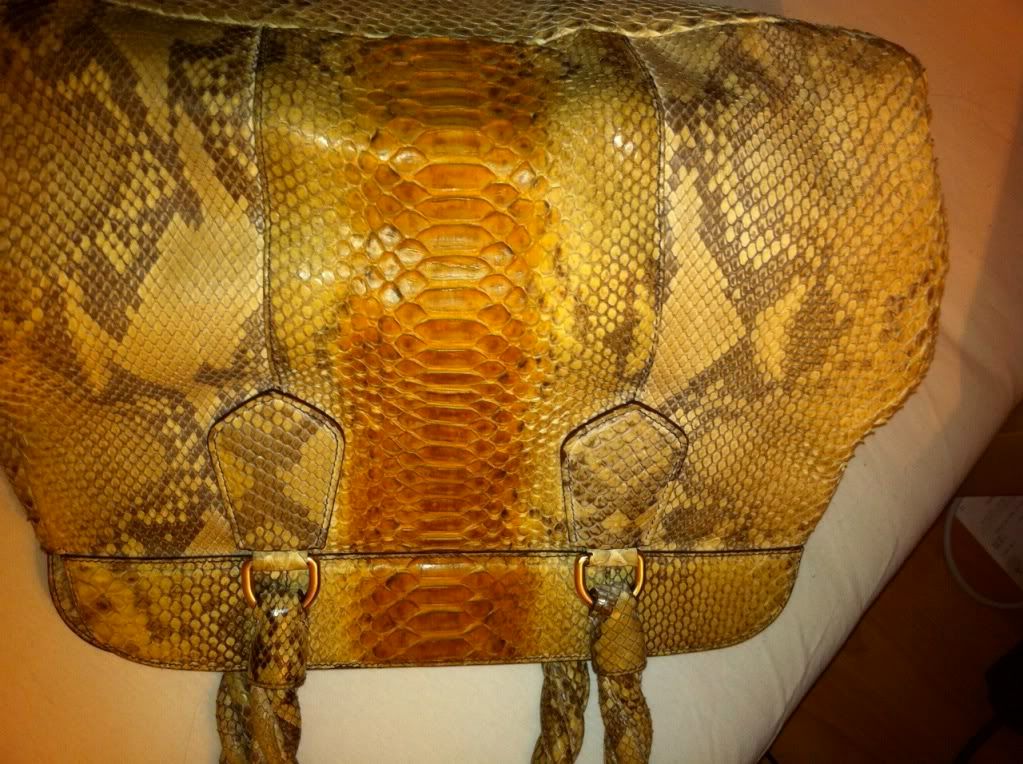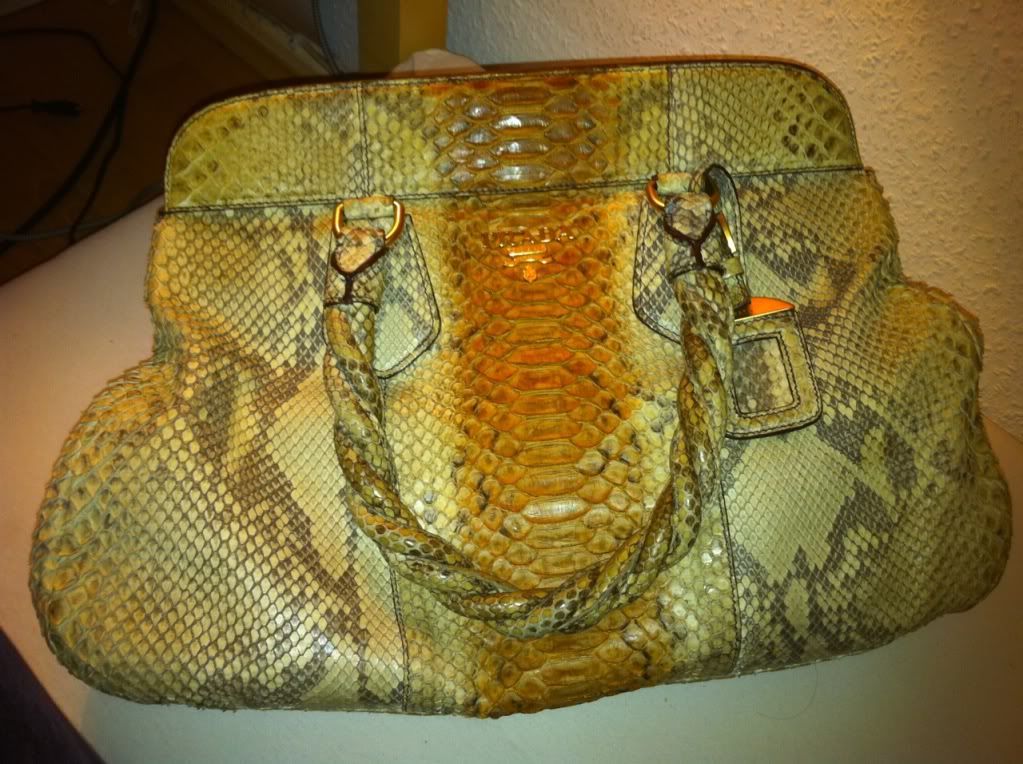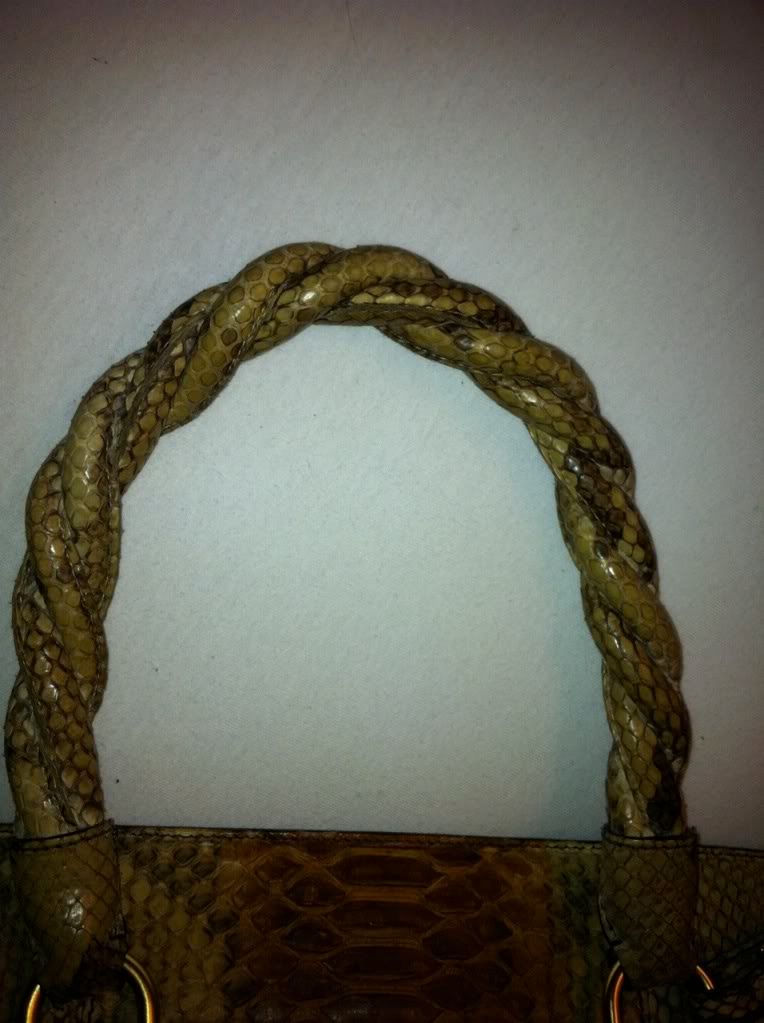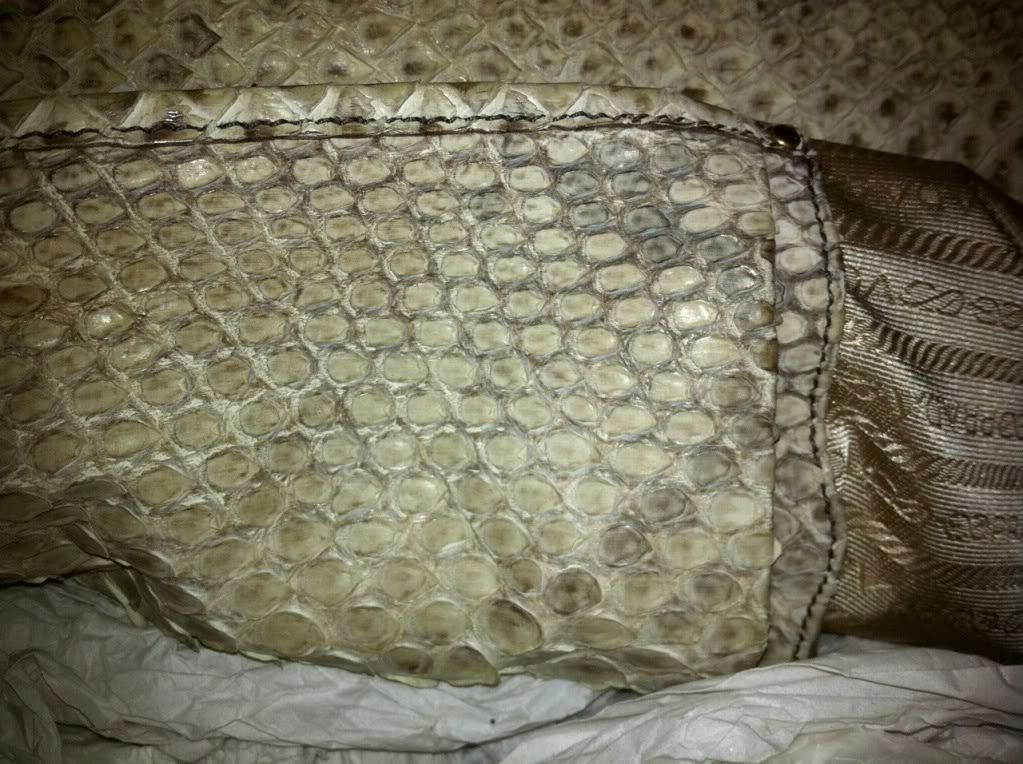I live in Germany and I have a beautiful Python snakeskin handbag in untreated, natural grey python leather.
Unfortunately, the bag started to turn into a yellow/lvery very light green colour at the handles and got a pretty dark patina (from hand oil etc).
The rest of the leather seems to be very dry as the scales turn up. I have to admit that i wore thebag quite often.
Is it possible to order some products for cleaning and conditioning from you?
Do you have any other advice?
Here are some pictures of the bag with description:
Front_bag: You can see the light green colour on the corners and in the upper part of the bag.
Handle: the handles turned in to a brown/greenish (somewhat dirty) colour
Scales: the scales are turning up
back of the bag: the bag has a light greenish tone in the middle part
sideview and inner pocket picture: you can see the original (light grey) colour here.
I just wish that my bag will someday look as beautiful as in the beginning! Do you have any hopes for the bag? The most disturbing thing is the greenish colour for me.
#1. Back View
#2. Front View
#3. Handle
#4. ?
#5. Inner Pocket
#6. Scales Turning Up
#7.Side View












